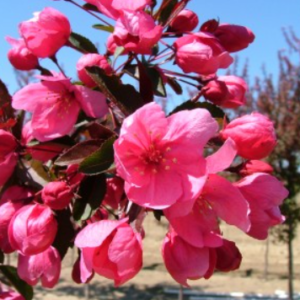Key Facts
Scientific Name: Syringa reticulata
Common Name: Japanese Tree Lilac
Family: Oleaceae
Height: 20-30 feet at maturity
Spread: 15-20 feet
Leaf Shape: Ovate, with smooth edges
Bark Color: Reddish-brown to gray, with attractive horizontal lenticels
Fall Foliage Color: Yellow to brown
Flower Color: Creamy white, large panicles
Growth Habit: Upright, spreading canopy
Sunlight: Full sun
Soil Preference: Well-drained, loamy soils
Water Needs: Moderate, prefers consistent moisture
Wildlife Value: Attracts pollinators such as bees and butterflies
Pest and Disease Resistance: Generally resistant to common pests and diseases
USDA Hardiness Zone: 3-7
Why You’ll Love It:
The Japanese Tree Lilac is an excellent addition to any garden, offering large, fragrant clusters of white flowers that bloom in early summer. Its upright, spreading form provides structure, while its attractive bark adds winter interest. This tree’s low-maintenance nature and ability to thrive in a variety of soils make it a reliable and beautiful choice for enhancing landscapes.
Japanese Lilac Tree
The Japanese Tree Lilac (Syringa reticulata) is a large, ornamental tree known for its showy clusters of creamy white flowers and attractive bark. Blooming later than most lilacs, this tree offers a fragrant display in early summer, adding beauty and fragrance to landscapes. Ideal for adding height, color, and fragrance, it thrives in a variety of garden settings.




